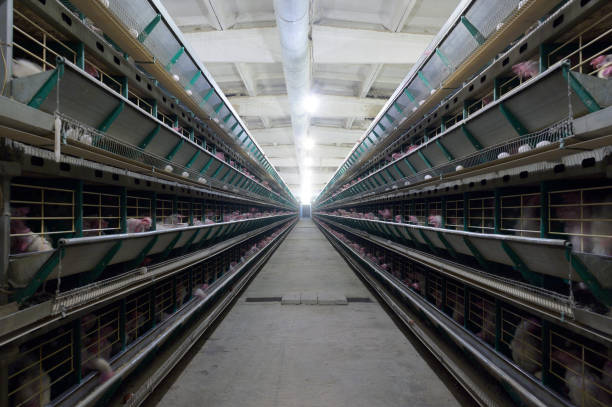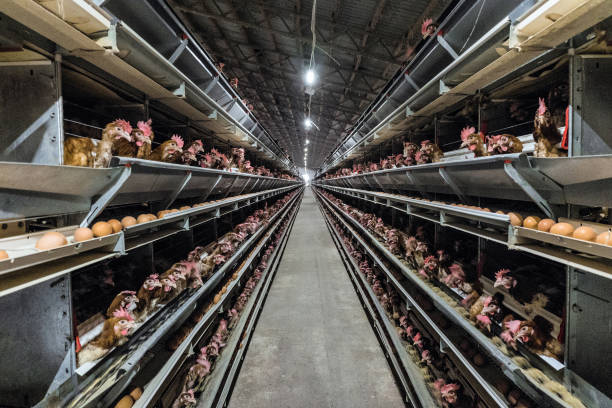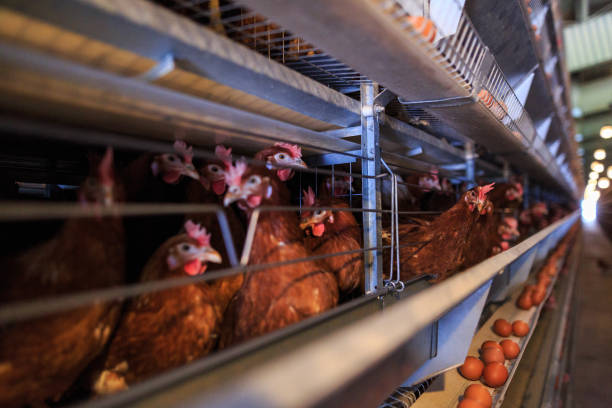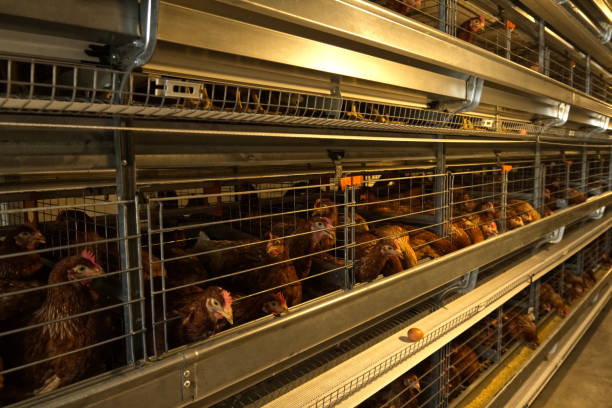
Optimizing Poultry Farm Layout for Maximum Efficiency in Africa: A Construction and Design Guide
Optimizing Poultry Farm Layout for Maximum Efficiency in Africa: A Construction and Design Guide
Poultry farming in Africa is a rapidly growing sector, crucial for food security and economic development. However, to truly harness its potential, optimized farm layouts are essential. A well-designed poultry farm maximizes efficiency, reduces costs, safeguards bird health, and ultimately, boosts profitability. This guide provides a comprehensive overview of poultry farm layout optimization, specifically catered to the African context, covering construction and design principles for both egg-laying and broiler chicken operations.
Understanding the African Poultry Landscape
Before diving into the specifics, it’s important to acknowledge the unique challenges and opportunities that African poultry farmers face. These include:
Climate Variability: Africa’s diverse climates, from hot and humid coastal regions to arid and semi-arid interiors, necessitate location-specific design considerations.

Resource Availability: Access to reliable water, electricity, and suitable building materials can be limited in some areas.
Disease Prevalence: Disease outbreaks can be devastating. Biosecurity measures are paramount.
Market Access: Proximity to markets and efficient transportation are crucial for profitability.
Land Availability and Cost: Securing suitable land at an affordable price is often a significant hurdle.
Labor Costs and Availability: Labor costs can vary dramatically across the continent. Automation levels must be carefully considered.
Regulatory Environment: Understanding local regulations regarding environmental protection and animal welfare is essential.
Key Principles of Poultry Farm Layout Design
Several key principles guide optimal poultry farm layout design:
Biosecurity: Implementing strict biosecurity measures to prevent disease introduction and spread is paramount.
Ventilation: Ensuring adequate ventilation to maintain air quality, reduce humidity, and control temperature is critical for bird health and productivity.
Lighting: Providing appropriate lighting regimes to stimulate egg production in layers and promote growth in broilers.
Feed and Water Access: Guaranteeing easy and consistent access to feed and water to support optimal bird performance.
Waste Management: Implementing efficient waste management systems to minimize environmental impact and maintain hygiene.
Labor Efficiency: Designing layouts that minimize labor requirements for feeding, watering, egg collection (for layers), and bird handling.
Bird Welfare: Creating an environment that promotes bird comfort, reduces stress, and allows for natural behaviors.
Scalability: Designing layouts that allow for future expansion to meet growing demand.
Essential Components of a Poultry Farm Layout
A typical poultry farm layout comprises the following key components:
Poultry Houses (Chicken Coops): The primary housing for the birds. Their design varies depending on whether you’re raising layers or broilers, and whether you prefer cage systems or floor systems.
Feed Storage: A designated area for storing feed, protecting it from spoilage, vermin, and the elements. Silos or bagged feed storage areas are common.
Water Source and Storage: A reliable water source and adequate storage capacity to meet the birds’ needs, especially during dry seasons. Boreholes, wells, and water tanks are common solutions.
Egg Collection Area (for Layers): A designated area for collecting, cleaning, and grading eggs.
Brooder Area (for Broilers): A separate space for brooding chicks during the first few weeks of life, providing a warm and controlled environment.
Waste Management Area: A composting area, manure storage pit, or other system for managing poultry waste.
Office and Staff Facilities: An office for managing farm operations and facilities for staff, including restrooms and changing rooms.
Access Roads and Perimeter Fencing: Well-maintained access roads for transporting feed, birds, and waste. Perimeter fencing to secure the farm and prevent unauthorized access.
Biosecurity Measures: Including foot baths, vehicle disinfection points, and quarantine areas for incoming birds.
Specific Design Considerations for Layer Farms
Layer farms require specific design considerations to optimize egg production and bird welfare:
Cage Systems vs. Floor Systems: Consider the pros and cons of each system. Cage systems offer better space utilization and egg collection efficiency, but floor systems allow for more natural bird behavior.
Cage Dimensions and Layout: Ensure adequate space per bird in cages to prevent overcrowding and stress.
Nest Box Design: Provide comfortable and accessible nest boxes to encourage hens to lay their eggs in the designated areas.
Lighting Program: Implement a consistent lighting program to stimulate egg production. Gradual increases in light intensity and duration are typically used.
Ventilation: Maintain excellent ventilation to remove ammonia and other harmful gases, ensuring good air quality.
Specific Design Considerations for Broiler Farms
Broiler farms require design considerations that promote rapid growth and efficient meat production:
Floor Space: Provide adequate floor space per bird to allow for movement and prevent overcrowding.
Ventilation: Excellent ventilation is crucial to remove heat and humidity, especially during hot weather. Consider tunnel ventilation systems in hot climates.
Heating and Cooling: Implement heating systems for brooding chicks and cooling systems (e.g., evaporative coolers) for managing heat stress in older birds.
Litter Management: Proper litter management is essential to maintain dry and hygienic conditions, preventing footpad dermatitis and other health problems.
Feed and Water Distribution: Ensure even distribution of feed and water throughout the house to minimize competition and ensure all birds have access.
Construction Materials and Techniques for African Conditions
Choosing the right construction materials is crucial for durability, affordability, and suitability to the local climate. Common building materials in Africa include:
Concrete Blocks: Durable and relatively affordable, providing good insulation.
Bricks: Widely available and offer good thermal mass.
Timber: Can be used for framing and roofing, but requires treatment to prevent termite damage.
Corrugated Iron Sheets: Affordable and easy to install for roofing, but can be noisy and prone to rust.
Bamboo: A sustainable and readily available material in some regions, suitable for construction.
Construction techniques should prioritize durability, ventilation, and insulation. Consider using locally sourced materials whenever possible to reduce costs and support local economies.
Optimizing for Climate Control
Climate control is a critical aspect of poultry farm design in Africa. Strategies for managing heat, cold, and humidity include:
Orientation: Orient the poultry houses east-west to minimize direct sunlight exposure during the hottest parts of the day.
Roof Design: Use reflective roofing materials to reduce heat absorption. Overhangs can provide shade.
Insulation: Insulate the roof and walls to reduce heat transfer.
Ventilation: Maximize natural ventilation through strategically placed openings and fans. Consider tunnel ventilation for broiler farms in hot climates.
Evaporative Cooling: Use evaporative coolers or misters to reduce air temperature.
Shade: Provide shade for birds in outdoor runs or free-range systems.

Heating: Use brooders or heaters to maintain optimal temperatures for chicks during the brooding period.
Water Management in Poultry Farms
Access to clean and reliable water is essential for poultry production. Water management strategies include:
Water Sourcing: Identify a reliable water source, such as a borehole, well, or municipal water supply.
Water Storage: Install adequate water storage tanks to meet the birds’ needs, especially during dry seasons.
Water Treatment: Treat water to remove contaminants and prevent the spread of disease.
Water Distribution: Use nipple drinkers or bell drinkers to provide easy access to water while minimizing spillage.
Water Conservation: Implement water conservation measures, such as collecting rainwater and reusing wastewater for irrigation.
Waste Management Systems

Proper waste management is crucial for environmental protection and biosecurity. Common waste management systems include:
Composting: Composting poultry manure to create a valuable fertilizer.
Manure Storage Pits: Storing manure in covered pits to prevent odors and runoff.
Anaerobic Digestion: Using anaerobic digestion to convert manure into biogas for energy production.
Litter Management: Regularly removing and replacing litter to maintain hygiene and prevent disease.
Biosecurity Protocols
Implementing strict biosecurity protocols is essential to prevent disease outbreaks. Key biosecurity measures include:
Perimeter Fencing: Securing the farm with perimeter fencing to prevent unauthorized access.
Vehicle Disinfection: Disinfecting vehicles entering and leaving the farm.
Foot Baths: Providing foot baths at the entrance to poultry houses.
Quarantine: Quarantining incoming birds for a period of time to ensure they are disease-free.
Restricting Access: Restricting access to the farm to essential personnel only.
Regular Cleaning and Disinfection: Regularly cleaning and disinfecting poultry houses and equipment.
Rodent and Pest Control: Implementing rodent and pest control programs.
Vaccination Programs: Implementing appropriate vaccination programs for the specific diseases prevalent in the region.
Labor Efficiency and Automation
Optimizing labor efficiency is crucial for profitability. Consider the following:
Automated Feeding and Watering Systems: Installing automated feeding and watering systems to reduce labor requirements.
Egg Collection Systems (for Layers): Using automated egg collection systems to improve efficiency.
House Layout: Designing the house layout to minimize walking distances for workers.
Ergonomic Design: Using ergonomic designs for equipment and workstations to reduce worker fatigue and prevent injuries.
Cost Considerations and Budgeting
Developing a detailed budget is essential for planning and executing a poultry farm project. Cost considerations include:
Land Acquisition: The cost of purchasing or leasing land.
Construction Costs: The cost of building poultry houses, feed storage, and other infrastructure.
Equipment Costs: The cost of purchasing feeders, drinkers, cages, ventilation systems, and other equipment.
Operating Costs: The cost of feed, water, electricity, labor, and other inputs.
Contingency Fund: Allocate a contingency fund for unexpected expenses.
Regulatory Compliance
Ensure compliance with all relevant local regulations regarding environmental protection, animal welfare, and food safety. Consult with local authorities and experts to ensure that your farm meets all requirements.
Conclusion
Optimizing poultry farm layout for maximum efficiency in Africa requires careful planning, attention to detail, and a thorough understanding of the local context. By implementing the principles and strategies outlined in this guide, poultry farmers can create sustainable and profitable operations that contribute to food security and economic development in the region. Remember that this is a general guide and consulting with experts in poultry farming, construction, and local regulations is vital for the success of your specific project. By considering all these factors, African poultry farmers can create efficient, profitable, and sustainable operations.
